|
Nutrition plays a critical role in any workout regimen: it’s not just about what you’re doing ON the mat, what you’re doing OFF the mat matters too. Especially when it comes to what we’re putting on our plates. Fueling the body with the right nutrients is essential for optimal performance and recovery. Balancing macronutrients such as carbohydrates, proteins, and fats ensures sustained energy levels during exercise and supports muscle repair post-workout. By prioritizing nutrition alongside exercise, individuals can maximize their fitness results and overall well-being.
When I can, I really support eating local. Eating produce from local Fort Worth farms offers numerous benefits. By purchasing fruits and vegetables grown nearby, you are supporting local farmers and our own community economy. The produce is fresher since it doesn't travel long distances, maintaining its nutritional value and flavor. Locally sourced ingredients also tend to be grown using fewer pesticides and chemicals, promoting a healthier diet. Additionally, buying local reduces carbon emissions associated with transportation, contributing to a more sustainable food system. Overall, choosing locally produced produce is a simple yet impactful way to enjoy fresh, healthy food while supporting local businesses and the environment. Not sure where to shop locally in Fort Worth? Check out these options: Off the Farm Food (Flower Mound) Off the Farm Food has been providing our community with healthy and clean meat since 2013. We offer grass fed/grass finished beef, pastured chicken, lamb and pork, farm fresh pastured eggs, and raw milk cheese direct from local farms. We also have a large selection of organic pantry items. The food we offer will never contain hormones, antibiotics, fillers or gmos. We take orders through our website and order with the farms we are partnered with once a month. We want to make it easy to obtain clean food, so there are no memberships, contracts, minimum orders or monthly ordering commitments! We believe you should be able to order exactly what you want, when you want it. Off the Farm Food has convenient order pick up locations in Mansfield, Coppell, Flower Mound, Frisco, Frisco (West), Grapevine, Highland Village, Kaufman, Richardson and Roanoke. The Farmacy on the River (Glen Rose) Your source for local and organic produce, meats, eggs, baked goods, health foods, supplements, essential oils, Kangen alkaline water, detox solutions & more! We also provide health consultations by appointment and weekly workshops to empower you! We have a CSA with a monthly package of seasonal local foods too! Wholesome Farms Coop (Richland Hills) We are a group of like-minded 'crunchies' who source real food and quality goods through a network of local farms and small businesses - including raw milk, cream, yogurt, and cheese; grass fed meat; fresh eggs; produce; unfiltered honey; soap, etc. Soy/GMO/corn free feed? Yep! You want it? We'll do our best to find it! Currently, pickups are scheduled every other Thursday in North Richland Hills, Euless, Hurst, and Colleyville. Do have a local farm to recommend? Leave us a comment to check them out!
2 Comments
I’m often asked why so many ballerinas become Pilates students and/or Pilates teachers. Pilates and ballet share several similarities that have contributed to the popularity of both practices. Both focus on promoting strength, flexibility, and balance, emphasizing the importance of proper alignment and posture. The graceful movements and controlled breathing techniques utilized in both Pilates and ballet help practitioners develop a strong mind-body connection. Additionally, both disciplines require concentration and precision in executing movements, leading to increased body awareness and improved coordination. Many dancers incorporate Pilates into their training regimen to enhance performance and prevent injuries, highlighting the complementary nature of these two forms of exercise.
Ballerinas incorporate Pilates into their training regimen for several reasons. Pilates helps improve core strength, stability, and flexibility, which are essential for ballet dancers to execute precise movements with grace and control. The focus on alignment and body awareness in Pilates contributes to better posture and body mechanics, reducing the risk of injury during intense dance rehearsals and performances. Additionally, Pilates exercises target smaller muscle groups that may be neglected in traditional ballet training, leading to a more balanced and efficient body overall. The emphasis on breath control in Pilates also aligns with the breathing techniques used in dance, enhancing endurance and stamina on stage. Overall, the combination of Pilates and ballet training can result in improved technique, performance quality, and longevity in a dancer's career. We are fortunate to welcome another ballerina to The Pilates Center Instructor family: Sasha! Aleksandra (Sasha) Volodina is originally from Helena, MT and began dancing at the age of three under Campbell Midgley, former Houston Ballet professional. She performed lead roles at Queen City Ballet such as “Clara” and “Sugar Plum Fairy” in The Nutcracker. At the age of 13, she attended the Bolshoi Ballet Academy in Moscow, Russia. Sasha has competed in many different international competitions, placing 1st at Universal Ballet Competition for classical solos and Pas de Deux. Post-high school, she began choreographing and teaching for QCB, setting original contemporary/ballet works. Sasha was drawn to Pilates as a way to effectively crosstrain for her dance career. She is currently working towards a BFA in Ballet and a BA in Psychology at Texas Christian University, along with getting her 700hr comprehensive Pilates Teacher Trainee certificate. She is involved in DanceTCU performances, dancing roles such as “Giselle” and “Bluebird Pas de Deux.” She loves working with people of all abilities and ages and looks forward to meeting new people! Let’s welcome Sasha Volodina to the studio!! Utilizing Pilates to Triumph over Ataxia Telangiectasia: Client Spotlight
We are proud of all our clients at The Pilates Center but today we especially want to highlight this young woman. Claire has been faithfully devoted to her Pilates practice with us for 5 years. Her unwavering dedication is especially inspiring because she has a very rare neurological condition called Ataxia Telangiectasia. Ataxia telangiectasia (A-T) is a rare, progressive, and incurable genetic disorder that affects the nervous system, immune system, and other body systems. This condition leads to poor coordination, involuntary movements, and difficulty walking (ataxia). Additionally, individuals with A-T may experience weakened immune responses, increased risk of infections, and are more prone to developing cancer. Telangiectasias, which are small red "spider veins" that appear on the skin or whites of the eyes, are also common in individuals with this condition. The progressive nature of A-T can significantly impact an individual's quality of life as the symptoms worsen over time. Early diagnosis and proper management are crucial in providing support and improving the outcomes for individuals living with Ataxia Telangiectasia. Pilates can be beneficial for patients with A-T by focusing on improving core strength, balance, and coordination. The controlled movements in Pilates can help enhance stability and proprioception, which are often compromised in individuals with A-T. By engaging in Pilates exercises specifically tailored to their needs, patients can work on strengthening muscles, improving posture, and increasing flexibility. Additionally, the mind-body connection emphasized in Pilates practice may help individuals better understand their movement patterns and improve overall body awareness. Overall, incorporating Pilates into a comprehensive treatment plan can support individuals with A-T and other neurological conditions in maintaining functional independence and quality of life. We consider it a privilege to work with this remarkable young woman. To know Claire is to love Claire. Thank you Claire for trusting us to be on this journey with you! Meet our New Instructor: Sydney Hall
When practicing Pilates, having an instructor you can trust is paramount to ensure a safe and effective workout experience. The guidance provided by a knowledgeable and experienced Pilates instructor goes beyond just demonstrating exercises; it encompasses proper form correction, personalized modifications, and insightful feedback tailored to your unique needs and goals. Pilates isn’t one size fits all, and a good instructor will be able to work with where your body is at on any given day- whether you’re feeling especially strong, or slightly injured, or anything in between. I like to say that you probably wouldn’t get your haircut from someone who only took a weekend course, so don’t trust your body to them either. Proper Pilates education is hundreds of hours of coursework and practical experience. Also, a good Pilates instructor is more than just an instructor: many act as a mentor, motivator, and partner in your journey to improved physical fitness and overall well-being. Their expertise empowers you to push boundaries, explore your potential, and achieve results with confidence and security. Therefore, the relationship between a Pilates practitioner and their instructor is built on a foundation of trust, respect, and open communication, fostering a supportive environment for growth and learning. Ultimately, investing in a trustworthy Pilates instructor is investing in yourself, your health, and your fitness journey. All instructors at the Pilates Center Fort Worth have gone through a rigorous, 3rd party certified Pilates Education Program and are vetted by myself before joining the studio. And I couldn’t be more pleased than to welcome our newest instructor: Sydney Hall! Sydney is originally from Memphis, Tennessee and graduated May of 2024 from Butler University with a B.S. in Dance Arts Administration with a Marketing minor. Currently, she is dancing with Texas Ballet Theater’s Studio Training Company for the upcoming 2024-2025 season and working towards earning her BASI Pilates Teacher Certification. Sydney, who has been dancing since age three, studied on full merit scholarship at Butler where she performed many leading roles for Butler Ballet, including The Sugar Plum, Winter Fairy, and worked with choreographers Jennifer Archibald and Maria Konrad. Sydney was first introduced to Pilates around age twelve as a way to cross-train and strengthen her body in order to help enhance her ballet technique. In her final year of school at Butler, she re-discovered her love for Pilates training and began to go through BASI Pilates Comprehensive Teacher Training Program. Her goal as an instructor is to help clients appreciate the abilities of their own body, leave each class feeling stronger, and enjoy how Pilates makes them feel! Please help me welcome Syndney to the studio! Why Pilates works in injury rehab and prevention
Most people are aware that Pilates is an incredible full body workout, but fewer people know just how good it is for rehabilitation! Many people stop working out all together when they are injured or rehabbing from an injury, but there are better options for rehabilitation, and Pilates is one of them. By strengthening the deepest muscles of the core, optimizing alignment, and creating correct movement patterns, Pilates can not only prevent reaggravation of the injury, it can help develop correct movement patterns that reduce the likelihood of injuries in the future. When applied correctly, Pilates has been found to be effective in managing a range of diagnoses and injuries, reducing pain and disability levels. For example, a systematic review of studies published between 2005 and 2016 measured the efficacy of Pilates in the rehabilitation of low back pain, ankylosing spondylitis, multiple sclerosis, post-menopausal osteoporosis, non-structural scoliosis, hypertension and chronic neck pain. Nineteen papers found Pilates to be more effective than the control or comparator group at improving outcomes including pain and disability. Why is Pilates so effective at rehabilitation? Here are a few reasons: Pilates emphasizes controlled movements and proper alignment One of the key reasons why Pilates is a good exercise to do post injury is its emphasis on controlled movements and proper alignment. This is especially important during the recovery process, as it helps individuals strengthen muscles in a safe and effective manner. The low-impact nature of Pilates also makes it gentle on the joints, allowing for a gradual progression toward full recovery without putting excess strain on the injured area. Pilates helps improve flexibility and range of motion Flexibility and range of motion are often two things lost when you are injured, and rebuilding these capacities in a structured way is crucial. This is especially true when you are experiencing muscle tightness or stiffness following your injury. By incorporating stretching exercises into the routine, Pilates helps to lengthen muscles and improve joint mobility, promoting faster healing and a quicker return to regular physical activities. Pilates focuses on core strength Pilates is known for its focus on core strength, which plays a vital role in supporting the entire body. A strong core not only improves posture and alignment but also helps prevent future injuries by providing stability and support during movement. By targeting the deep stabilizing muscles of the abdomen and back, Pilates helps individuals rebuild strength from the inside out, creating a solid foundation for overall physical well-being. Remember, stability + mobility = agility. You need a strong combination of both stability exercises AND mobility exercises to get back to your fully functioning self. Join us! Pilates for Pathologies and Injuries Certificate Course Pilates is an excellent tool to help in rehabilitation, and we are thrilled to be hosting the Pilates for Pathologies and Injuries Certificate Course for Pilates instructors! This three-day certificate course, happening July 26-28, presents a Physical Therapy approach to working with clients who have injuries, physical limitations, or movement dysfunctions. Led by expert Samantha Wood, the workshop will explore common injuries, offering insights on definitions, symptoms, precautions, and recommendations. Samantha will also guide participants through targeted exercises for each pathology, ready for immediate application with Pilates clients. Dive into the world of Pilates therapy with us! Get more information here. Ideal Weather: Texas summers can be HOT, so it’s the ideal time to move your fitness routine indoors. Our newly renovated space at the Pilates Center Fort Worth provides a sense of tranquility, allowing individuals to shift their focus inward and connect with their bodies. The use of natural light, calming colors, and well-ventilated spaces creates an inviting and peaceful atmosphere. Additionally, we’ve ensured ample space for movement, allowing for a seamless flow and uninterrupted sessions. Beat the heat and come workout in our studio!
Boosted Motivation: With the sunny days and upcoming beach outings, many people feel more motivated to work on their fitness goals during the summer. The desire to feel confident in summer attire or participate in outdoor sports can give you that extra push to establish and maintain a consistent workout routine. And if you’re new to Pilates, don’t worry, we’ve got you covered with our new client specials. More Me Time for Moms: If you’re a mom with kids, you know the summers can be quite hectic. The kids are no longer at school all day, and while more time together can be super special, it can also be super stressful. Carving out your selfcare workout time is important any time of the year, but can give you that much needed mini-break each day when the kids are complaining again that they’re “booooored”! Preparation for Fall and Winter: Starting a Pilates routine in the summer helps you establish healthy habits that can carry over into the colder months. By building a strong foundation of physical activity during the summer, you'll be better prepared to maintain your fitness level and avoid the winter slump when the weather becomes darker and colder. As you consider the benefits of starting a Pilates routine in the summer, remember no matter what you do to stay hydrated, wear sunscreen, and listen to your body's needs while working out. I hope you’ll embrace the season's energy and join us to boost your overall well-being and health! At Pilates Center Fort Worth, we receive many questions about Pilates. In this blog post, I’ll answer the top 10 frequently asked questions about Pilates to provide you with a better understanding of this popular form of exercise.
1. What is Pilates? Pilates is a form of exercise that focuses on strengthening muscles while improving postural alignment and flexibility. It emphasizes core strength, proper breathing, and mind-body connection. 2. Is Pilates suitable for beginners? Yes, Pilates is suitable for beginners! In fact, many Pilates classes offer modifications for all levels, making it an inclusive form of exercise for everyone. We offer New Client Specials for those who are new to our studio or have been away for 6 months or more. 3. What are the benefits of doing Pilates? Some benefits of Pilates include improved core strength, increased flexibility, better posture, enhanced muscle tone, and overall body awareness. It can also help with stress relief and relaxation. I find the more I do Pilates, the better everything else in my life works! 4. Do I need special equipment for Pilates? While traditional Pilates uses equipment like reformers and chairs, mat Pilates can be done with just a mat. You can also incorporate small props like resistance bands and balls for added challenge. 5. How often should I do Pilates? Pilates is safe enough to do everyday, but for optimal results, aim to do Pilates 2-3 times per week. Consistency is key in seeing improvements in strength, flexibility, and overall fitness. 6. Can Pilates help with back pain? Yes, Pilates can be beneficial for individuals with back pain. The focus on core strength and alignment can help alleviate back issues and improve spinal health over time. We work with many clients with pain. If you have a specific injury or issue, make sure to reach out to your instructor. You may also be better served with private classes where an instructor can help modify the exercises specific to your needs. 7. Will Pilates help me lose weight? Joseph Pilates famously said “In 10 sessions you will feel the difference, in 20 you will see the difference, and in 30 you'll have a whole new body.” Pilates can definitely contribute to weight loss when combined with a healthy diet and overall active lifestyle. Pilates helps build lean muscle mass, which can boost metabolism. Every class is challenging, fun, and engaging, and what I like to say is that the best exercise for weight loss is the one you’ll do consistently. 8. Is Pilates suitable for all ages? Yes, Pilates is suitable for all ages! From teenagers to older adults, Pilates can be modified to accommodate different fitness levels and age groups. We have clients in their teens all the way up to their 80’s. 9. How is Pilates different from yoga? Although Pilates and yoga share some similarities, such as focusing on breath and mind-body connection, Pilates is more centered on physical conditioning, while yoga incorporates more spiritual and meditative elements. 10. Can I do Pilates at home? Practicing Pilates at home is a great option in between studio classes. We highly recommend getting a series of private sessions under your belt so that you can confidently perform the foundational mat work correctly, and then continuing studio classes to keep progressing. This helps prevent injury, overuse, and ensures you’re using the correct muscles and techniques in the proper way. We hope these answers have provided you with valuable insights into the world of Pilates. If you have any more questions or are interested in trying out Pilates, feel free to reach out to us at the Pilates Center Fort Worth. The holidays can often be a time of indulgence, with festive gatherings, delicious treats, and a break from our regular routines. Our New Year’s resolutions feel a long way off, and we’ve been through Valentine’s Day, Spring Break, and Easter, so it’s totally normal to feel a bit off course with our health and wellness routine. Balance is important- it’s great to enjoy yourself during these festive times, and not be overly perfectionist about any specific routine- but if you find yourself needing to refocus and get back on track after indulging, here are five tips to help you reset and recommit to your well-being:
1. Start With Hydration Whether you’ve overindulged or not, prioritizing hydration is always a good idea. Make sure you are drinking plenty of water throughout the day to help flush out toxins and rehydrate your body. You can also include herbal teas, infused water, or coconut water for added hydration benefits. What I find helps me most is carrying a reusable water bottle around with me- so I have no excuse not to hydrate! I’m particularly loving the fun spring colors that Stanley just brought out- but truly any reusable water bottle will work. 2. Revisit Your Meal Planning Getting back on track with your health and wellness starts in the kitchen. Take some time to plan balanced meals that include plenty of fresh fruits and vegetables, lean proteins, whole grains, and healthy fats. Cooking at home allows you to have more control over the ingredients and portion sizes, making it easier to make nutritious choices. If you’re a lover of apps, try a macro or food tracking app. It’s not necessarily about counting calories- even just being mindful of the foods we’re eating can help. 3. Incorporate Movement Into Your Day Physical activity is key to maintaining a healthy lifestyle. Whether it's going for a walk, practicing Pilates, or hitting the gym, find activities that you enjoy and make them a regular part of your day. Aim for at least 30 minutes of moderate exercise most days of the week to boost your energy levels and improve your overall well-being. To prioritize movement in your already busy day, I recommend purchasing a package of Pilates sessions, and scheduling them in advance. I find that if I put it in my calendar, I’m more apt to do it! 4. Get Adequate Rest Quality sleep is crucial for your body to recover and recharge. Establish a bedtime routine that helps you unwind and prioritize getting seven to eight hours of restful sleep each night. Adequate sleep not only supports your physical health but also has a positive impact on your mental and emotional well-being. 5. Practice Mindful Eating After a period of overindulgence, it can be helpful to practice mindful eating to reconnect with your body's hunger and fullness cues. Slow down during meals, savor each bite, and pay attention to how different foods make you feel. Listening to your body's signals can help you make more conscious food choices and prevent mindless snacking. By incorporating these five strategies into your routine, you can gradually get back on track with your health and wellness goals. Remember that progress takes time, to give yourself grace on the journey, and to be patient and kind with yourself as you recalibrate and reestablish healthy habits. Here's to a fresh start and a renewed commitment this spring! With March Madness in the air, I thought I’d focus one of this month’s blog posts on the specific benefits of Pilates for basketball players. Professional NBA players such as LeBron James, Kobe Bryant, James Harden and Jason Kidd all rely on Pilates to stay agile and fit on the court, and for good reason! Basketball is a sport that demands speed, agility, strength, and coordination. To excel on the court, players need to be in top physical condition. While traditional strength training and cardio workouts are essential for basketball players, there is another form of exercise that can take their performance to the next level: Pilates. What is Pilates? Pilates is a low-impact exercise system that focuses on building strength, flexibility, and endurance without bulk. It targets the core muscles, enhances body awareness, and improves alignment and posture. Originally developed by Joseph Pilates in the early 20th century, Pilates has gained popularity worldwide for its numerous benefits for people of all ages and fitness levels. Benefits of Pilates for Basketball Players 1. Core Strength and More Basketball players rely heavily on their core muscles for stability, balance, and power during games. Pilates exercises engage the deep abdominal muscles, lower back, and pelvis, helping to strengthen the core and improve overall body control. A strong core is essential for executing quick movements, jumps, and directional changes on the court. However, it’s not JUST about core strength. Pilates focuses on small muscle groups and movements that are often neglected and underdeveloped in male athletes, targeting them through more precise movement and proper breathing techniques. NBA All-Star Kyle Lowry has said his Pilates practice is “something completely different from what I do every day.” 2. Injury Prevention The repetitive nature of basketball movements, such as running, jumping, and pivoting, can put a strain on the body and lead to overuse injuries. Pilates focuses on proper alignment, muscle balance, and joint mobility, which can help prevent injuries by addressing muscular imbalances and enhancing body mechanics. By incorporating Pilates into their training regimen, basketball players can reduce the risk of common injuries like sprains, strains, and tendonitis. NBA professional Dwayne Wade credits Pilates with helping reduce his injuries: “I really felt the Pilates loosen up my muscles. I recall making a move, and the basketball ended up on my foot and I almost did a split on the ball. Normally, that’s a groin pull, but I bounced back.” 3. Flexibility and Range of Motion Flexibility is crucial for basketball players to move efficiently and prevent muscle tightness. Pilates incorporates dynamic stretches and exercises that promote flexibility in the muscles and joints, helping players achieve a greater range of motion. Improved flexibility can enhance performance on the court by allowing players to make sharp turns, reach for rebounds, and defend against opponents more effectively. 4. Mind-Body Connection Pilates emphasizes concentration, control, and precision in movement, fostering a strong mind-body connection. By practicing Pilates, basketball players can enhance their proprioception (awareness of body positioning) and coordination, translating to better on-court performance. Improved focus and body awareness can help players react quickly to game situations, execute plays with precision, and maintain mental clarity under pressure. In conclusion, Pilates offers a multitude of benefits for basketball players looking to elevate their game. By incorporating Pilates into their training routine, players can enhance their core strength, prevent injuries, improve flexibility, and develop a greater mind-body connection. Whether you are a professional athlete or a weekend warrior, Pilates can be a valuable addition to your basketball training program. Ready to take your game to new heights? Give Pilates a shot! Hypermobility is a condition where joints can move beyond the normal range of motion, often leading to joint pain, instability, and an increased risk of injury. While those with hypermobility may find it challenging to engage in certain types of physical activity, Pilates offers a gentle yet effective approach to managing this condition. Understanding Hypermobility Before delving into how Pilates can help with hypermobility, it's essential to understand the condition. Hypermobility is a condition characterized by excessive joint movement beyond the normal range of motion. It’s hard to get exact numbers on people who have this condition because it’s not always symptomatic (meaning they don’t go to a doctor to get the diagnosis!) but estimates vary widely, with experts positing that somewhere between 2% and 57% of the population is hypermobile. It is more common in gymnasts, athletes, dancers, and musicians. Hypermobility can be attributed to genetics, underlying connective tissue disorders, joint shape, looser ligaments, poor muscle tone or repeated training/stretching in sports like gymnastics. While hypermobility may seem advantageous in activities like dance or gymnastics, it can also lead to joint instability, discomfort, and an increased risk of injuries. Thus, understanding one's hypermobility and adopting appropriate measures to strengthen and stabilize joints are vital for maintaining overall physical well-being. How Pilates Helps Pilates is a low-impact form of exercise that focuses on building strength, flexibility, and body awareness. Here are several ways in which Pilates can benefit individuals with hypermobility:
If you have hypermobility and are interested in trying Pilates, it's essential to start with the guidance of a certified Pilates instructor. They can tailor the exercises to suit your individual needs, gradually progress your practice, and ensure that you perform the movements correctly to prevent injury. Instructors at The Pilates Center Fort Worth are trained to work with individuals from all walks of life, including those struggling with hypermobility. We would love to work with you! Take a look at how to get started with us. Final Thoughts Pilates offers a holistic approach to managing hypermobility, combining strength, flexibility, and body awareness to support joint health and overall well-being. By incorporating Pilates into your fitness routine and working closely with a qualified instructor, you can experience the benefits of this gentle yet effective form of exercise. Whether you are looking to improve stability, reduce pain, or enhance your overall quality of life, Pilates can be a valuable ally in your journey towards managing hypermobility. So, why not give Pilates a try and discover the positive impact it can have on your hypermobility management journey? Contact us today! |
Heather GradkeI'm a BASI Certified Pilates Instructor by day, somewhat competent housewife by night. I used to have hobbies but then CHILDRENS. I am married to the love of my life and somewhat charismatic Rustin Gradke. I have 4 kids that are wonderful sometimes but mostly they just eat a lot. I'm a lover of God and movement and the occasional bowl of queso. Archives
July 2024
Categories |
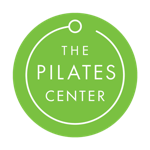




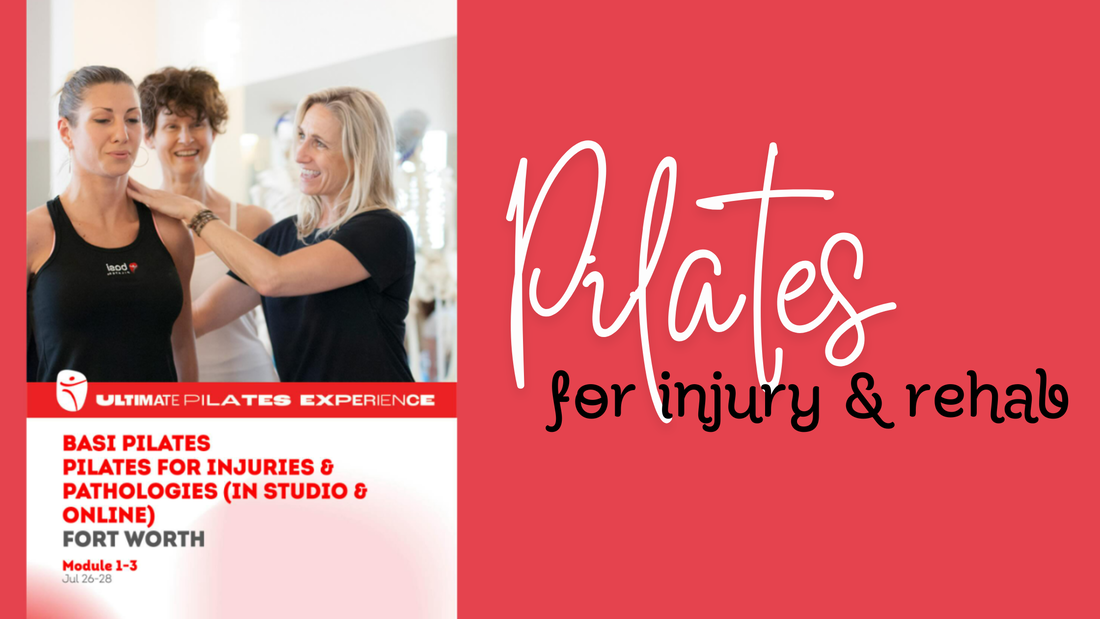
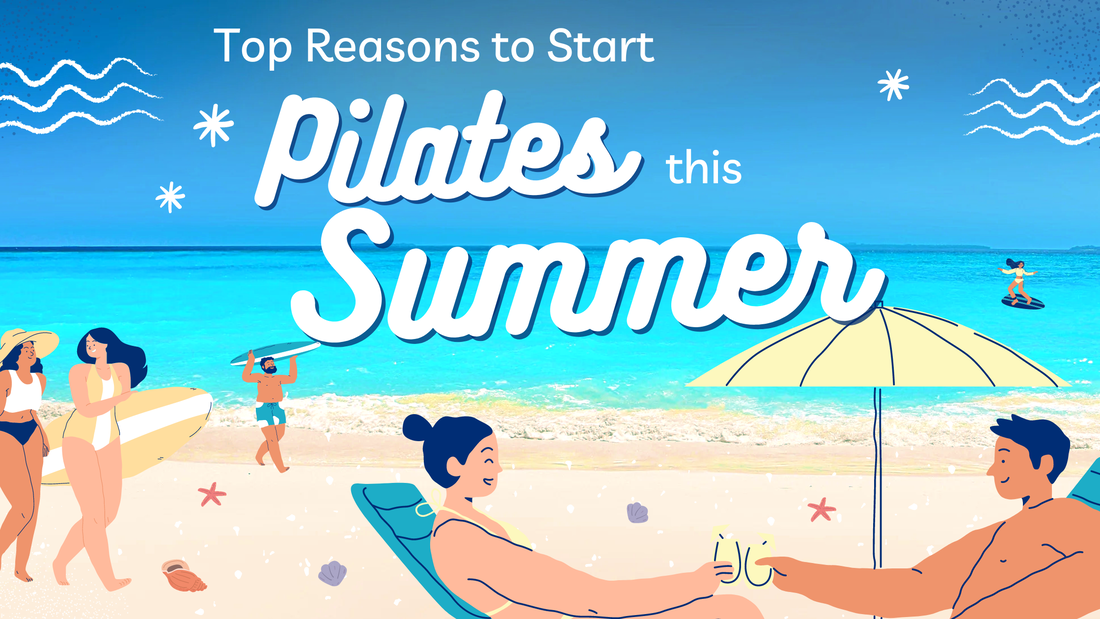

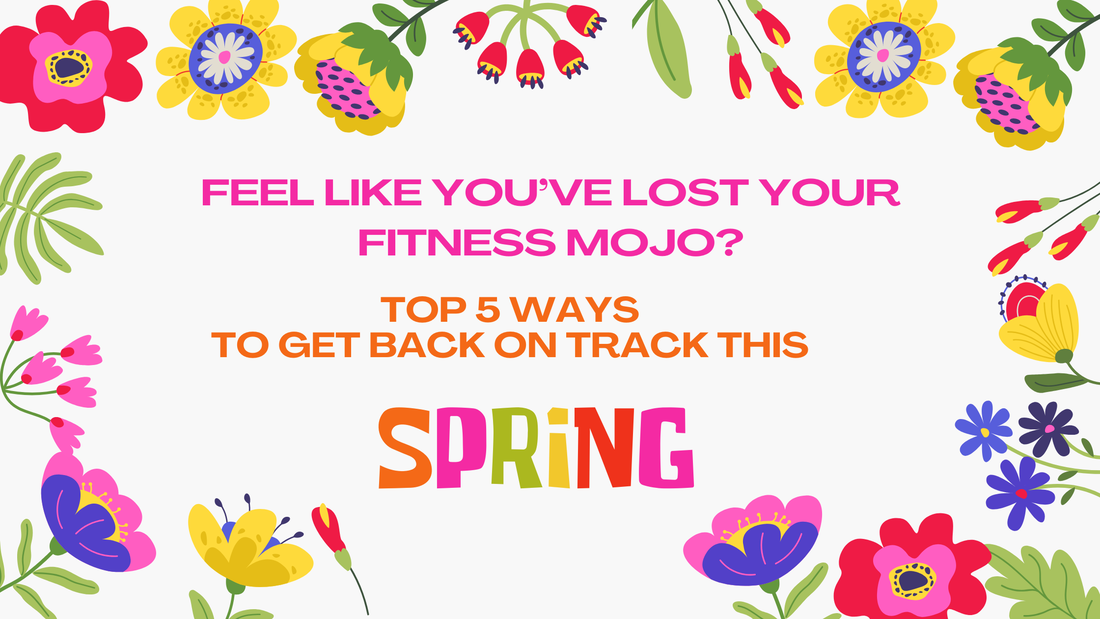

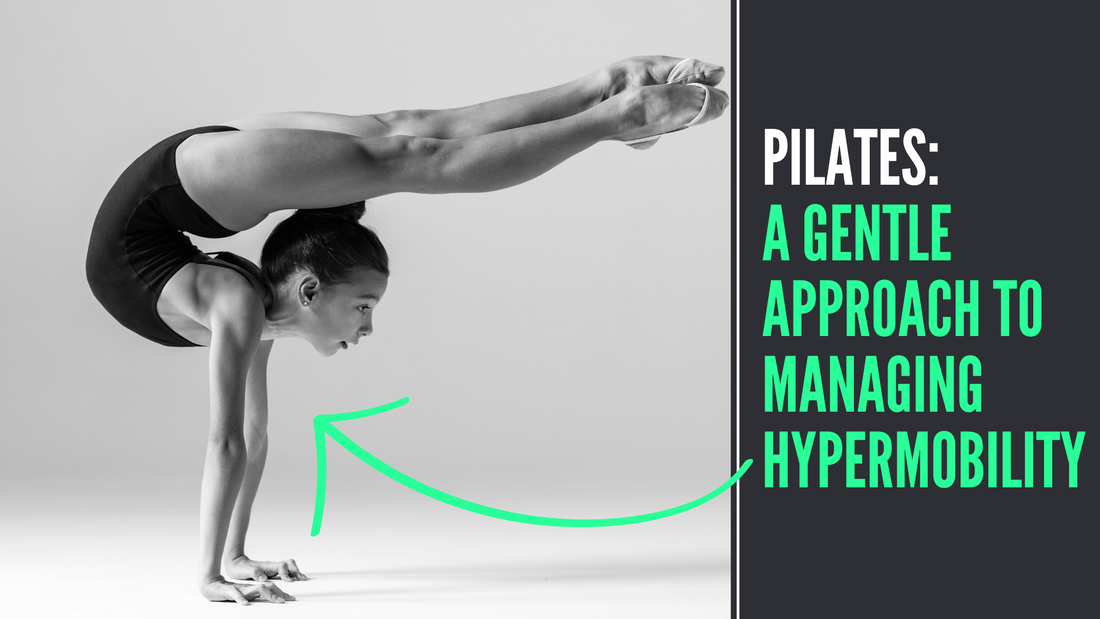
 RSS Feed
RSS Feed